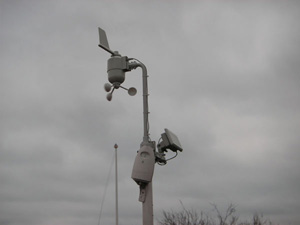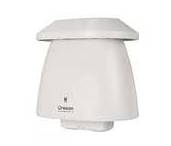Hi


Yes stars, it was me who posted that on 10th December 2008. Like you I had been unhappy with the UV data from my sensor. So, I decided
to experiment and found, if I tilted the sensor so that the eye on the top faced directly at the sun at mid-day in mid April, it would give acceptable readings for the rest of the summer.
Good data guys ![]()
Hmmm. I wonder if the same trick would be handy with the Hobby Boards 1-wire solar? That has an acceptance angle of 140 degrees, so if mounted horizontally then in the winter months the sun never makes it into the ‘field of view’…
Is that 140 degrees a hard limit, or is it the definition of the viewing angle which is normally the angle where the reading is 50% down from the peak value?
The latter.
Up near the top of the spec sheet (PDF available on this page) they talk about “acceptance angle”, but in the table at the bottom the wording is “Total angle at half sensitivity points 140 deg”.
So at 70 deg off the vertical the response is 50% of what it is at the verical. That’s OK, remember this measurement (Global Solar Irradiance) is related to a horizontal surface. Where the bare hobby boards one is a bit weak is at the very low angles around sunrise and sunset but a good diffuser can help that a lot.
What are you thinking of as “very low angles”?
Maybe 10 degrees or so.
At this latitude the sun doesn’t (quite) manage that even at transit for a couple of weeks either side of the Winter solstice…
By mid February it is managing 20 degrees at transit (and it’s now managing ~35 degrees :D).
Can’t measure what you don’t have ![]()
I don’t agree at all. These sensors are built to measure horizontal irradiance, they have to be mounted flat horizontal. If you tilt the sensor you’re biasing the readings. That’s why you get higher readings than your official met service.
I live in northwest Spain, even in a sunny winter day it’s not easy to reach 1 or 1.5 UV index, so imagine in Sweden…
I don’t think that you can make that assumption for an inexpensive UV sensor such as this. My assumption has always been that the optical design is not correct and the above description of the UVN800 construction supports that. If you look at the Davis it has a lens/diffuser that (to make another assumption) does correct the spatial response.
:lol:
One thing I’m interested to try is a ‘Breitling style’ PV based solar sensor. It will be interesting to see how that compares…
I don't agree at all. These sensors are built to measure horizontal irradiance, they have to be mounted flat horizontal. If you tilt the sensor you're biasing the readings. That's why you get higher readings than your official met service.I live in northwest Spain, even in a sunny winter day it’s not easy to reach 1 or 1.5 UV index, so imagine in Sweden…
Hi…
Maybe you are right but just 2 days after I made the first posting the UVI forecast made by DMI says approx 3 in the area that I live in…
Look here http://uv-saf.dmi.dk/Scandinavia.html.
And if the sensor is constructed in the way you say how does the UV radiation get to us…only on our heads or the wohle body…
And 23 March is early spring in southwest Sweden no snow or ice and we ar half way towards midsummer, then we get UV peaks about 7-8…
regards stars
I think all piranometers and radiometers are constructed that way, no one has the sensor itself (photodiode) completely exposed. They are “buried” inside the body with a lens or diffuser on top. Is that diffuser which makes the adecuate cosine response. Look at some hi-tech schematics:
http://www.yesinc.com/products/data/uvb1/index.html
http://www.hukseflux.com/products/solarRadiation/nr01.html
So I think the plastic cover stars talks about is really a diffuser (not just a protective cover). Regarding Davis diffuser look at the specs sheet: [i]"Diffuser
[quote author=Breitling link=topic=38773.msg317164#msg317164 date=1237981904]
I think all piranometers and radiometers are constructed that way, no one has the sensor itself (photodiode) completely exposed. They are “buried” inside the body with a lens or diffuser on top. Is that diffuser which makes the adecuate cosine response.
Maybe you’re right, I still can’t undestand how Oregon call this thing a “radiation shield”…
Anyway I think tilting the sensor is not the best choice to make it work.

A bit off topic as I believe that’s the WMR200 outdoor temp/hum sensor but I certainly agree!
Comparing my WMR928 outdoor temp/hum (housed in a non-aspirated plant saucer shield) against the unmodified WMR200, the WMR200 always reads higher in day time (even in overcast conditions) and at night it reads the same or lower dependent on cloud cover - it could almost be used as a moderately efficient night time cloud sensor!
If at some stage I get a good sized screen it will be interesting to see how the WMR928 and WMR200 sensors compare when equally shielded (I suspect they will be much closer than at present).
Just read this thread and I remembered I`ve sent 2-3 emails at oregon about my defective(bought at July) uvn800(after 3months readings it stopped working, 1uvi reading always when other nearby stations had 6-7) but they NEVER REPLIED…